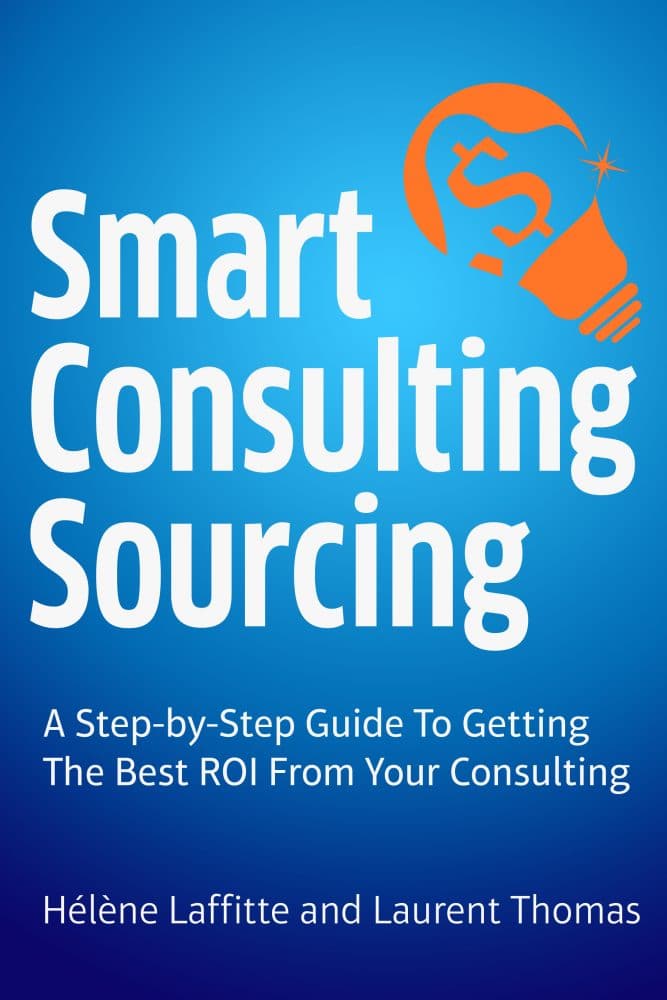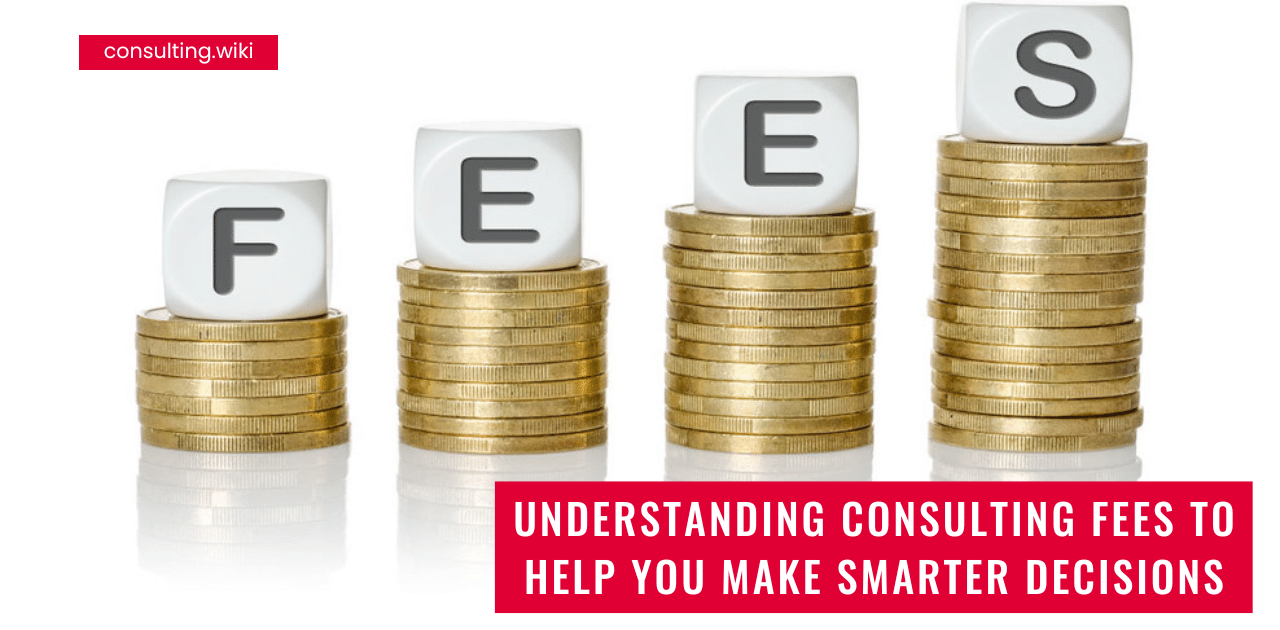
8 overlooked but Vital elements of an RFP for consulting services
Writing an RFP for consulting services is challenging. Project scope is not something you can measure, and it is often the result of extensive discussions within your teams. Many companies rush their request for proposal and send a one-page definition of their needs.
8 overlooked but Vital elements of an RFP for consulting services.
As a buyer, you need to put yourself in the consultants’ shoes to understand how vital a clear RFP is for them too. Answering a request for proposals takes time, energy, and, yes, money.
“If your content isn’t driving the conversation, you’re doing it wrong.” – Dan Roth
As a partner in any consulting firm, you need to assess the ratio of benefits vs. risks before engaging resources into designing an answer. When you have a vague RFP – no or little context and unclear deliverables – you should be wary.
READ ALSO
Consulting fees are always a hot topic. Many clients feel like consultants are too expensive. Understanding how consultants build their price is interesting, and it gives some keys to negotiate the deal.
But an RFP is not limited to the project purpose and requirements. The consultants also need to understand how the process will unfold, what you expect to find in a proposal, and how you will evaluate them.
Here are 8 points beyond the scope, objectives, and deliverables to include in your consulting RPFs:
1. Approach to the consulting selection process –
Clarity and transparency in the selection process matter a lot and can make a big difference in the quality of the advice you will receive. Therefore, you need to communicate and describe to the prospective providers how the selection process will unfold and what criteria will drive the decision.
2. Stages in the consulting RFP process –
First, let’s outline the critical milestones for the RFP process. It is essential for consulting candidates to understand how much time they have to prepare and submit their proposals. It will also give them an idea of when the project could start.
- Distribution of the RFP and intention to Bid
- Questions and Answers pre-proposal submission (you should share the answers with all participants)
- Timeframe for the reception of the proposals
- Short-list and feedback
- Presentations
- Selection & NegotiationProject kick-off
Usually, at this point, you should have signed a Non Disclosure Agreement with the potential candidates. However, even if this step is not mandatory, we highly recommend protecting your confidentiality.
3. Stakeholders engagement –
It’s advisable to get several stakeholders involved.
– Future Project Leader
– Project Sponsor
– RFP Leader
– Representatives from Finance and Strategy
– Key stakeholders for the project (i.e., corporate of other functions)
They can participate in the selection committee and organize face-to-face discussions with the finalist (or you can leverage new technologies like Skype, Zoom, and Google hangouts).
And now, let’s have a look at the proposal’s content.
4. Proposal’s content –
- Give some background information about who you are – Unless you are working exclusively with companies you already know (but not always a good idea), you need to let them know about your organization.
- Explain the context of the assignment – A project is rarely unidimensional. Therefore, understanding a project’s political and technical implications is key to designing a customized solution to your problems.
- Detail your expectations in plain English – Put on paper the benefits and documents you expect from the project and the constraints you might have.
To enable proper comparisons, do not hesitate to specify in your RFP a few expectations of the proposal and from the consultant, for example, you can include:
- A description of the objectives pursued, the approach and deliverables, the planning for the project highlighting the key milestones, and the project management structure proposed (including the contribution required from the client).
- Demonstration of competence, the consulting firm should also provide references on similar projects (industry/capability), the CVs of the actual consultants expected to work on the project, and examples of thought leadership they have produced in the field.
- Fees and workload should be detailed enough to understand the cost structure associated with the project clearly.
- Finally, you should describe how you will organize the Q&A between sending RFP and receiving the proposals. For example, when should the questions be sent? How will the answers be shared with the consulting providers?
5. Sharing your decision’s criteria –
Your selection criteria and expectations of the proposal have to be explicit. In principle, you know already how you will perform the selection. If not, well, that is the right moment to think about it. Selection criteria are usually a blend of components such as:
- The ability of the firm to get the job done – Check the references by leveraging feedback from previous clients on previous projects.
- The firm’s expertise in the required field – Ideally, the consulting firm should provide some thought leadership or position papers in the niche.
- The clarity of the approach and the deliverables – You need to understand if the deliverables are those you expect and understand how the consultant intends to get there.
- The team’s composition – You need to ensure that the consultants who will work on the project daily have suitable seniority and experience.
- The fit with the company – In short, do you think you will work well together? Will they have the right impact and recognition with your peers?
- The price of the project – Can you afford their services? Are you getting a positive value for your money? Are there hidden fees to be considered?
As you can see, these considerations are much broader than the sole price. Therefore, even though there is no magic formula using explicit criteria, communicating them to the Consulting firms early in the process is critical for getting a high-quality proposal and making informed and fair decisions.
6. Providing schedule and budget clues –
Whether your project is urgent or not, you likely have a timeline in mind. Or at least some internal deadlines or meetings. Knowing your schedule for the project is vital for the consulting candidates. In addition, it will directly impact the team composition and the cost of the project.
Users and buyers rarely include their budget in the RFP. However, if you are on a very tight budget, it can make sense to have that information in the RFP to ensure that you don’t lose time for proposals you cannot afford. Besides, the consultants will be able to come up with trade-offs or design-to-cost proposals.
7. Indicating your other requirements –
You might have other requirements that you want to include in your RFP. For instance, you might be interested in having references and contact information to check the references. You can also have some eligibility criteria linked to your internal procurement policies. For example, maybe your consulting providers have to be registered as a provider.
8. Giving a single point of contact for the RFP-
You also need to define the main point of contact during the process. Will it be someone from procurement, one of the executives, or even a third party? All the interactions with Consulting firms during the RFP process should go through that person. Letting the Consulting firms connect directly with the Executives of their choice would give an advantage to the incumbents and distort the competition.
Consulting sourcing tips

How To Manage the Tail Spend – Our 5 Recommended Practices
Discover effective strategies to conquer tail spend management with our comprehensive guide. Explore five recommended practices that will optimize your procurement process, reduce costs, and increase operational efficiency. Learn how to tackle low-value purchases, leverage technology, streamline supplier relationships, and implement data-driven decision-making. Don’t let tail spend derail your budget and productivity—empower your organization with our expert insights and take control of your procurement today.

Consulting Procurement or Procurement Consulting?
Type Consulting Procurement in your browser and look at the results. What do you find? A list of consulting companies that offer their services to help improve your company’s purchasing and/or sourcing capabilities. But is it the same thing as Consulting Procurement?

7 secrets to always work with the best consultants
7 secrets to always work with the best consultants
Previous Weeks’ issues

Warehousing Wisdom: Trends, Tactics, and Insights | This Week in Consulting
In this edition of This Week in Consulting, we’re diving deep into the world of warehousing management, uncovering the secrets to success in this high-stakes game.

From Stormy Seas to Steady Waters: Mapping the Path Forward in Global Real Estate | This Week in Consulting
In this issue of This Week in Consulting, we dive deep into the challenges and opportunities that lie ahead in the global real estate industry for 2024.

5G Tech Adoption: Exploring Reality Beyond the Hype | This Week in Consulting
In this edition of This Week in Consulting, we take a deep dive into the world of 5G and uncover its true potential, exploring how it is making waves in different sectors.
Choose the best next step for you
Buy the Book
Talk to us
Ready to get started on your next project? Need a new point of view? We will be happy to help. Please give us a call today, at no obligation to you
Hélène Laffitte is the CEO of Consulting Quest, a Global Performance-Driven Consulting Platform and author of “Smart Consulting Sourcing”, a step by step guide to getting the best ROI from your consulting. With a blend of experience in Procurement and Consulting, Hélène is passionate about helping Companies create more value through Consulting.







